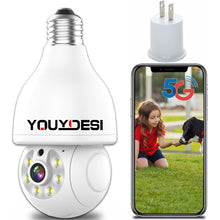To achieve night vision, conventional visible light illumination can be employed, but this method lacks discretion and can expose the surveillance target. Hidden night vision surveillance primarily employs infrared camera technology. Infrared camera technology is categorized into passive and active infrared camera technologies.
Passive infrared camera technology exploits the principle that all objects emit infrared light above absolute zero (-273°C). Since human bodies and warm objects emit strong infrared light, while other non-warm objects emit weak infrared light, specialized infrared cameras can be used for nighttime monitoring. However, due to the high equipment cost and the inability to reflect surrounding environmental conditions, passive infrared camera technology is rarely used in night vision systems.
Active infrared camera technology, on the other hand, generates artificial infrared radiation using specially designed "infrared lamps" to produce infrared light invisible to the human eye but detectable by regular low-light CCD black-and-white cameras or cameras that can switch from color to black and white automatically during the day and vice versa at night. These cameras make use of the infrared light reflected from the surroundings to achieve night vision.
The human eye cannot perceive infrared light, as digital cameras employ CCD sensors to detect all types of light. This disparity results in images captured by digital cameras being different from what the human eye sees. To address this issue, digital cameras insert an infrared filter between the lens and CCD to block out infrared light, allowing the CCD to sense only visible light during the day. This aligns the images captured by digital cameras with what the human eye perceives. Most infrared cameras today use LED infrared emitters as the primary component.
Currently, infrared cameras face a few issues, such as suboptimal nighttime visibility, often due to flashlight-like effects or inadequate illumination distance. The angle and functionality of infrared lamps play a significant role in this. Infrared lamps, also known as 850nm infrared emitters, have peak wavelengths at 850nm. The angle can be chosen from 5 to 60 degrees. Smaller angles result in longer illumination distances and a flashlight-like effect. Conversely, larger angles reduce the illumination distance substantially. To address this problem, the angle and cost of infrared emitters must align with the desired effect, with power and cost being directly proportional to one another.
Another problem lies in subpar color accuracy during the day. The color of all-in-one infrared cameras can exhibit some deviations during the daytime. This is mainly attributed to the camera's filter, typically a dual-band filter that allows a certain percentage of infrared light to pass through. This design advantageously lowers costs. However, since natural light contains a fair amount of infrared components, when these enter the CCD, they interfere with color accuracy, often causing effects like turning green plants gray (most apparent in well-lit outdoor environments). The issue can be resolved by using IRCUT dual-band filters. These filters comprise an infrared cut-off filter and a full-spectrum optical glass. When daylight lighting is sufficient, the infrared cut-off filter operates, ensuring accurate color representation by the CCD. When nighttime lighting is insufficient, the infrared cut-off filter automatically moves away, allowing the full-spectrum optical glass to take effect. This lets the CCD fully utilize all available light, significantly improving infrared performance.
The last issue is the factors affecting the lifespan of infrared lamps. Part of the electric energy consumed by the lamps converts to effective light energy, while another part converts to thermal energy, which is unavoidable. When excessive thermal energy is generated or no appropriate cooling measures are in place, the temperature rises, causing the lamps to age prematurely and leading to a rapid reduction in illumination distance. Notably, some manufacturers, driven by profit, focus solely on short-term performance and overlook the product's lifespan. This results in the lamps being overworked without effectively managing heat generation and temperature rise. To address these issues, Hikvision has introduced a cost-effective series of Intelligent Anti-Overexposure (SmartLED) infrared cameras. This series includes the conventional SmartLED color day-and-night infrared camera and the SmartLED D1 network camera. It uses industry-leading SmartLED technology and digital noise reduction technology, incorporating dual-band filters for day and night switching. These features make the camera exceptionally effective in nighttime surveillance, producing clearer and softer images.
The Intelligent Anti-Overexposure Infrared Camera series also uses high-brightness LED modules from Japan. These modules are highly efficient, have long lifespans, and deliver excellent infrared results. Additionally, the camera features an aluminum alloy housing that provides robust anti-interference and heat dissipation capabilities, with an IP66 waterproof rating, effectively resolving the issue of limited infrared lamp lifespans. This series is particularly well-suited for places that require nighttime recognition of facial features, such as residential communities, property management, hotels, government institutions, mines, schools, parking lots, and more.










